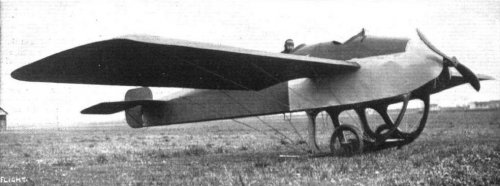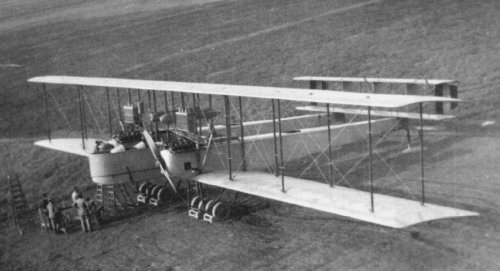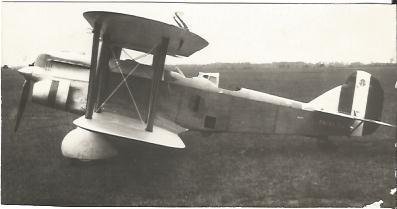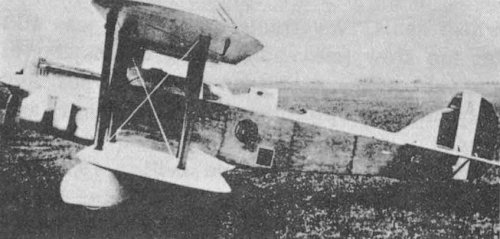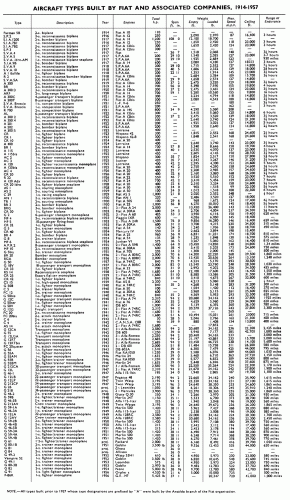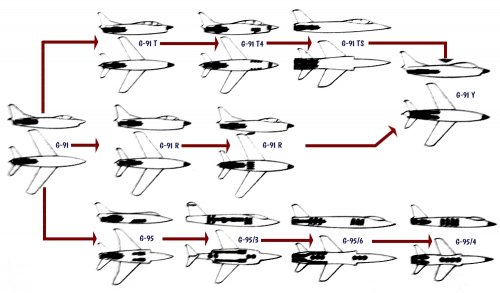airman: The 'G' in Fiat designations indicate the designs of Ing. Giuseppe Gabrielli. The 'R' is for Ing. Celestino Rosatelli (not 'Ricognitore').
-- BR = Bombardiere Rosatelli
-- CR = Caccia Rosatelli
For the record, the Sociétà Italiana Aviazione designations are attached. There doesn't seem to be a record of 'SIA 1, '2, or '3 models. This may be because SIA licence-built the Pomilio SP1, SP2, and SP3.
S.I.A. (Sociétà Italiana Aviazione), Turin
SIA SP 1 - 1916 Savoia Pomilio pusher biplane recce-bomber, x 1
SIA SP 2 - 1916 prod. vers. of SP 1 prototype, 1 x 250 hp FIAT A12
SIA SP 3 - 1917 SP 2 deriv. (improved crew accommodations)
SIA 4 - [??] NB: twin-engined SP 4 built by AER at Orbassano
SIA 5 - 1916 pusher biplane recce-bomber (licenced Farman MF.11)
- SIA 5: 100 hp 9.5L Fiat A.10 6-cyl repl. Fr. Gnome rotary
SIA 6b: 1917 recce biplane, aka Savoia-Pomilio SP.3
-- SIA's impr'd SP.2, higher power, shortened wings
- SIA 6b: 2-seat tandem in nacelle, twin-boom tails
- SIA 6b: 1 x 250 hp Fiat A.12 6-cyl.,* span 14.70 m
-- * Some a/c fitted with 300 hp Fiat A.12bis pusher
-- SIA 6b by SIA, SP.3 by Società Italiana Transaerea
SIA 7b - 1917 2-seat recce-bomber biplane, 13.30 m span, x 572
- SIA 7b series: 1 x 260 hp Fiat A12 or 300 hp A12bis 6-cyl
- SIA 7b1: Init. prod', unstaggered wings, lower cockpit
- SIA 7b2: Impr. vers., strengthened wings, higher cockpit
-- Designed by Ing Torretta and Carlo Maurilio Lerici
SIA 8b: 1918 2-seat tandem reconnaissance biplane, x 1
- SIA 8b: 1 x 300 hp Fiat A.12bis 6-cyl., span (??) m
- SIA 8b: Unstaggered 2-bay cellule w/ reduced space
-- Retained SIA 7b2 fuselage, empennage, and u/c
SIA 9b - 1918 2-seat recce-bomber biplane, 15.50 m span, x 191
- SIA 9b: 7b2 deriv, 1 x 700 hp Fiat A.14 liquid-cooled V-12
SIA 10 - SIA 13 - [??]
SIA 14b - 1916 twin-boomed heavy bomber, 32.90m span, x 2
- SIA 14b: 2 x 600 hp Fiat A.14 V-12 engines, aka SIA 1200
--
http://flyingmachines.ru/Site2/Crafts/Craft29047.htm
The early B.R./C.R. Rosatelli designs are listed below (I haven't found any record of plain 'R' or 'R.1'types):
SAI R.2 - 1918 2-seat recce biplane, 12.30 m span, x 129
- R.2: 7b2 deriv., short-span, 1 x 300 hp 6-cyl Fiat A12bis
-- R.2: 4 x ex-Italian a/c oper. by Turkish forces after WWI
B.R. - 1919 2-seat light bomber, 1 x 700 hp Fiat A.14 V-12 engine
- B.R.: Conventional wing struts as per SIA 9b, 15.50 m span
-- B 1: Swed.
Flygvapnet desig. for ex-
Flygkompaniet B.R.s
- R.700 - 1922 B.R. deriv. for absolute airspeed record, 210 mph
-- R.700 also participated in
Coupe Deutsch de la Meurthe in 1922
B.R.1 - 1924, improved B.R., Warren truss wing bracing struts
- B.R.1: 1 x 700 hp Fiat A.12 V12, 17,30 m span, x 150
-- B 2: Swed.
Flygvapnet desig. for ex-
Flygkompaniet B.R.1s
B.R.2 - 1925, improv. B.R.1, 1 x V12 Fiat A.25,* 17.30 m span
-- * 54.48 L A.25 power given as 1,090 hp TO, 950 hp sustained
- R.22 - reduced-scale, all-metal B.R.2 derivative recce a/c
-- R.22: 1 x 570 hp 27.5 L V12 Fiat A.22T, 14.00 m span, x 25
B.R.3 - 1930 B.R.2 deriv., main gear shocks, H-P slats, x 100
B.R.4 - 193? aerodynamically improved B.R.3 prototype(s)*
- B.R.4: Radiator under engine, spatted landing gears
-- * x 1 but two
Matricole Militari listed, MM.240/.241
C.R. - 1923 biplane fighter prototypes for C.R.1, MM.1/MM.2
- C.R.: Warren truss wing bracing, longer-span lower wings
C.R.1 - 1925 biplane fighter, 1 x 300 hp V8 HS-42, 8.95 m span
- C.R.1 : Hispano-Suiza 42, x 240 built, x 9 to Latvia
- C.R.1 : Re-eng. w/ IF
Asso Caccia V12 [distinct designation?]
--
'CR.1 Asso': speculative desig. for re-engined aircraft
- C.R.2 : C.R.1 re-engined with 1 x Armstrong Siddeley
Lynx radial
- C.R.3 : [??]
- C.R.4 : [??]
- C.R.5 : C.R.1 re-engined with 1 x 420 hp Alfa Romeo
Jupiter
- C.R.6 : [??]
- C.R.7 : [??]
- C.R.8 : [??]
- C.R.9 : [??]
- C.R.10: C.R.1 re-engined with 1 x 410hp Fiat A.20 v12
- C.R.20 - 1926 biplane fighter, Warren truss , 9.80 m span
- C.R.20: 1 x 420 hp Fiat A.20 V12, x 250 (approx)
- C.R.20B: 2wo-seat, dual-control trainer/comms a/c
- C.R.20-I: aka C.R.20 Idro, twin-float fighter, x 46
- C.R.20bis: impr. pilot accomm., landing gear, x 235
- C.R.20bisAQ : CR.20bis w/ high-altitude Fiat A.20AQ V12
- C.R.20 Asso: 1 x 450 hp IF
Asso Caccia V12, x 204
 .
.
